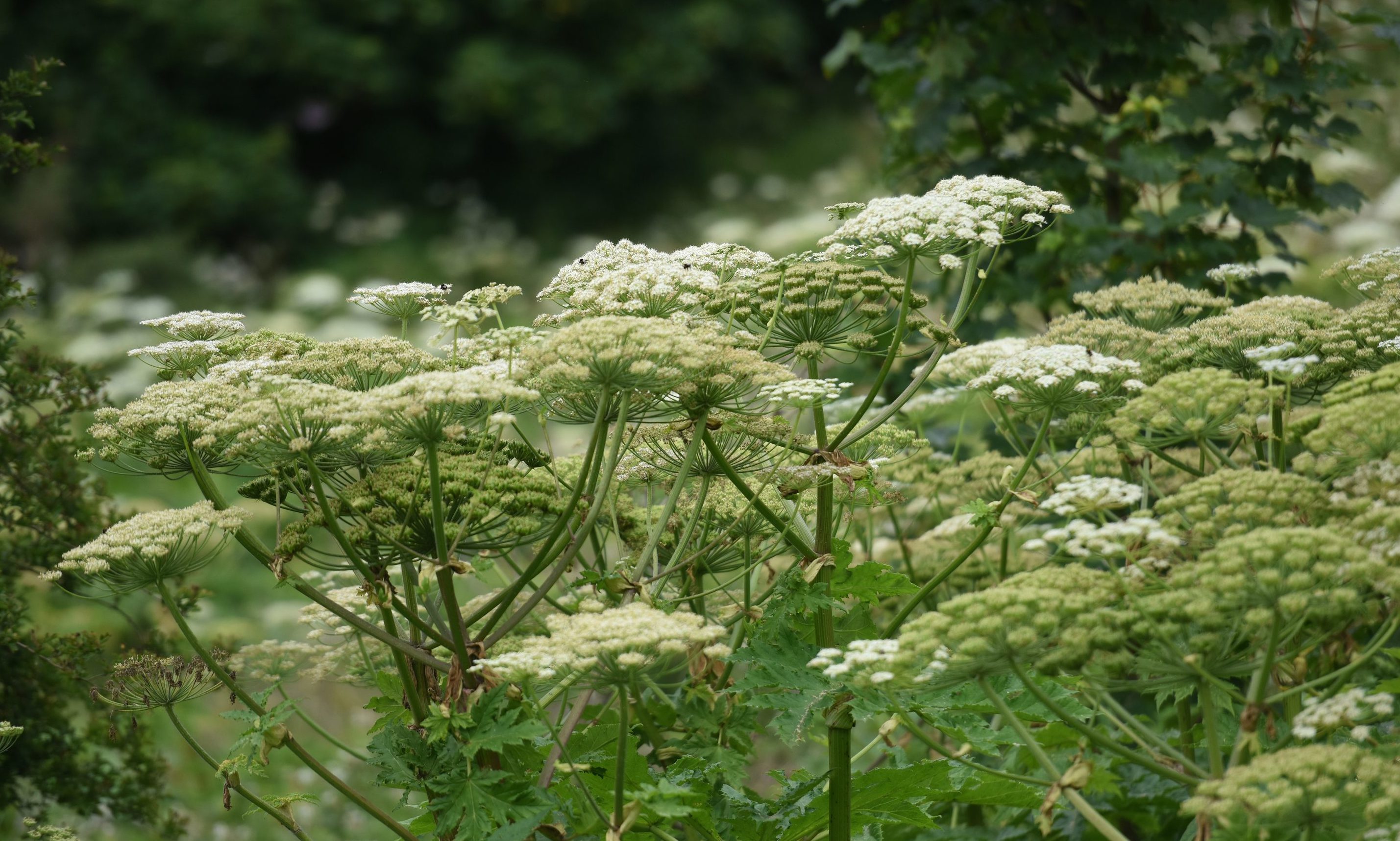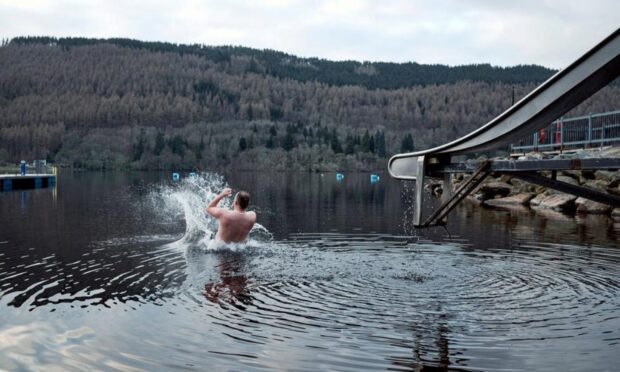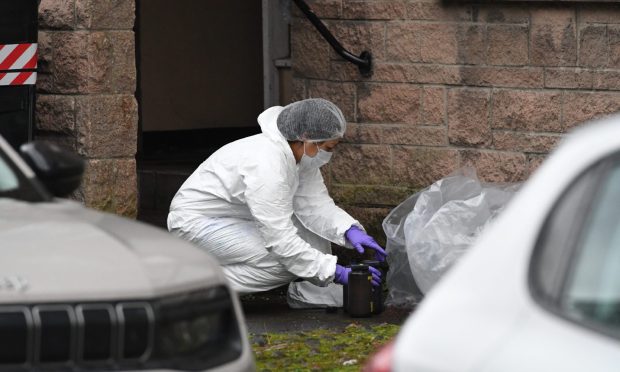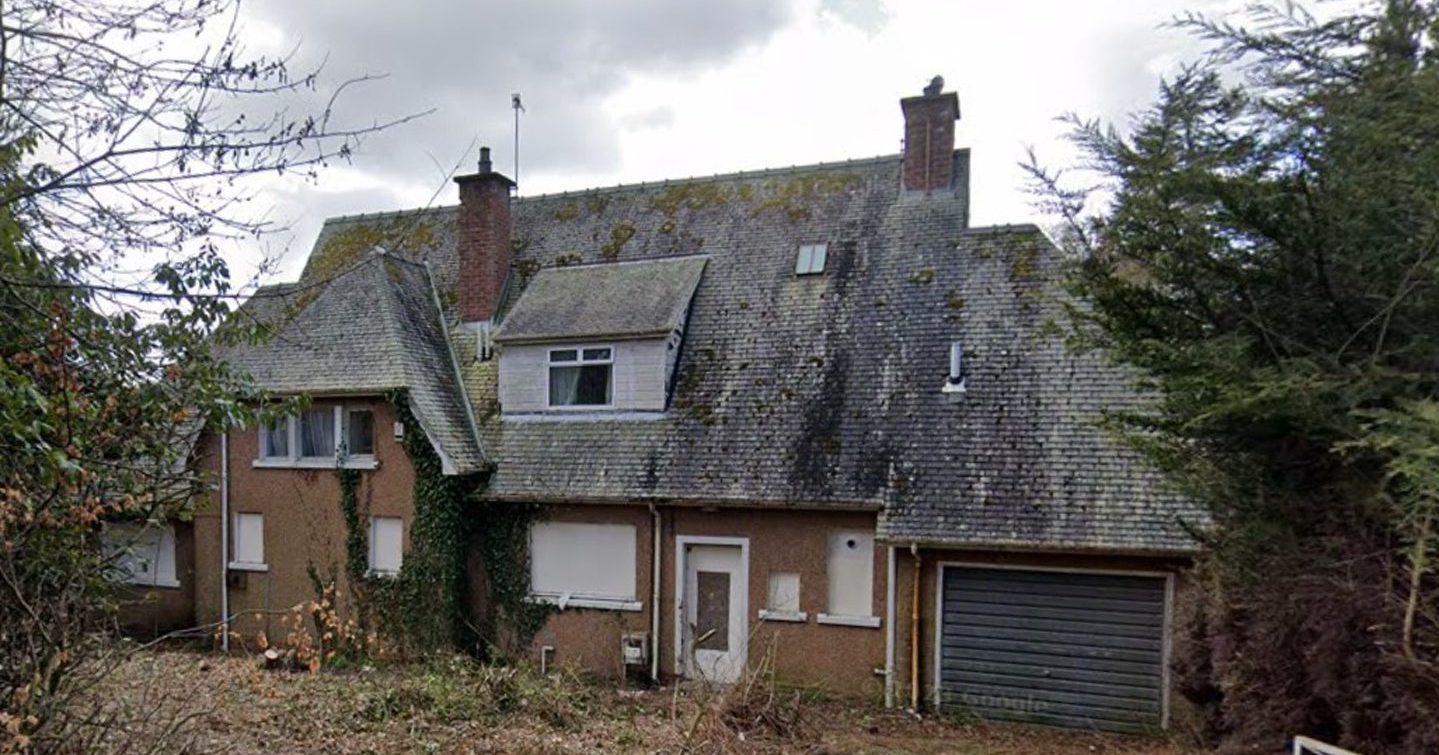Environmental health chiefs are under increased pressure to halt a spread of poisonous giant hogweed after an eight-year-old girl was badly hurt playing near her Tayside home.
Little Ellie Gallagher was rushed to hospital after being exposed to the invasive plant on a public path outside her house in Invergowrie.
Mum Gillian Connarty said she was shocked to see painful blisters erupt on her daughter’s arm and thigh.
Although she is recovering well, the schoolgirl has been warned that her wounds may take weeks to completely heal and could flare up again in the sunshine.
Doctors said she will have to treat the affected area with sun protection lotion for several years.
The accident comes amid growing concern over the annual invasion of giant hogweed throughout the Perth and Kinross patch.
The council has come under fire for failing to deal with the menace, although it is not responsible for tackling infestations on land it does not own, including the ground at Greystane Terrace where Ellie was injured.
“She had been out playing on Friday when she came back to the house saying that she felt sick,” said Gillian.
“It wasn’t until Sunday that it became clear what was wrong. Ellie was complaining of a sore stomach in the morning, but she came down a little later to tell me to look at her arm and thigh.
“They were covered with blisters.”
Gillian said Ellie was now on the mend.
“The doctors at Ninewells told me that it will take up to a week for the blisters to go down and that she will have to avoid any exposure of the affected areas to sunlight.
“It will then take five months for the burns to totally heal properly.
“For the next six years after that, she won’t be able to venture outside without covering the affected areas or using sun screen or the blisters could explode back into life.”
Gillian said the route onto Invergowrie’s Main Street had become increasingly overgrown in recent months.
“This will happen to other children if it is not dealt with,” she said.
Hogweed – also known as Heracleum mantegazzianum – is a listed noxious plant. Its sap, in combination with moisture and sunlight, can cause severe skin and eye irritation, painful blistering, permanent scarring and even blindness.
The plant is at its highest during late summer.
Carse of Gowrie councillor Douglas Pover said: “Firstly, I would send my best wishes to the girl concerned for a speedy recovery.
“I am sure it was very upsetting for her and her family. I have raised this incident with a manager in our environmental service who will have council officers check the path in question to see what can be done to assist the landowner in tackling this problem before someone else is injured.
“With the school holidays on, parents need to make their children aware of this dangerous plant when out playing.
“Hogweed looks harmless, but certainly isn’t and be a serious safety risk.”
Perth and Kinross Council officers can issue advice to private landowners who are suffering from hogweed infestations.
A local authority spokesman said: “As part of the council responsibilities for greenspace maintenance, we carry out the treatment of weeds in areas of council responsibility and this includes giant hogweed.”
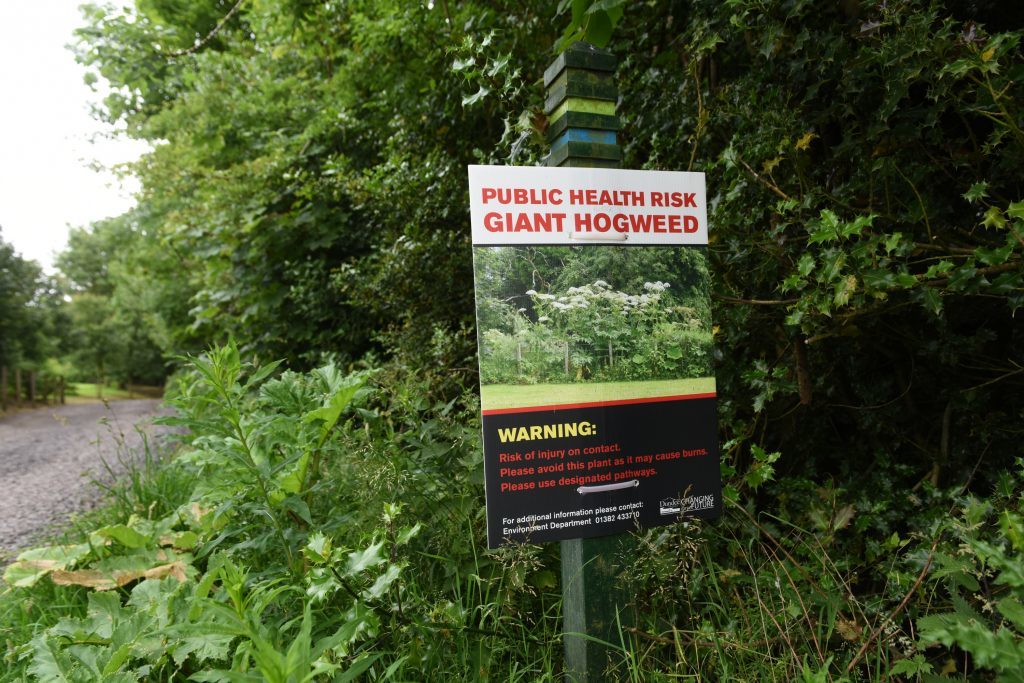 How to treat giant hogweed burns
How to treat giant hogweed burns
While most plants that grow in the UK are harmless, some sting, scratch or are poisonous – such as varieties of giant hogweed.
The NHS offers clear advice for how to respond if you come into contact with the plant, whose sap can cause very severe injuries.
The affected area should be immediately covered and then thoroughly washed with soap and cold water as soon as possible.
Exposed areas should be kept away from sunlight for 48 hours.
Contact can lead to sickness and stomach pains as the poison attacks the system, though the tell-tale burns and blisters can take up to 48 hours to appear.
Anyone who begins to feel unwell after contact with giant hogweed should contact their doctor who can ensure that treatment begins swiftly.
Topical steroids, applied early, can reduce the severity of the reaction and ease discomfort.
The blisters heal very slowly and can develop into phytophotodermatitis, a type of skin rash which flares up in sunlight.
It is important that those who have been burned by the plant keep affected areas covered with clothing or, at the very least, use high factor sun cream before exposing them to direct sunlight.
The need for that can last for as long as six years, with the threat of blisters returning if that advice is not followed.
Contact with the eyes can cause blindness in a worst case scenario. Eyes should be rinsed with water immediately after contact and those affected should wear sunglasses.
